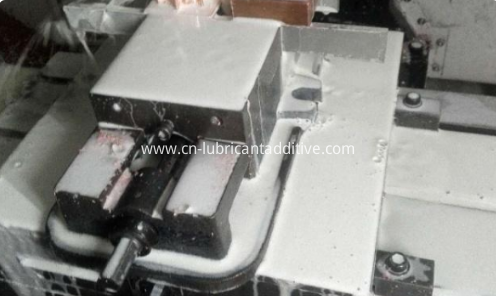What is the difference between grinding fluid and cutting fluid?
May 22, 2021
What is the difference between grinding fluid and cutting fluid? 1. Different ingredients Cutting fluids are classified into mineral oil, semi-synthetic and fully synthetic. The cutting fluid made of mineral oil usually emulsifies, showing a milky white milk color; the semi-synthetic cutting fluid shows a microemulsion, a little opaque. Grinding fluid is also divided into mineral oil and fully synthetic. The key considerations of general grinding fluid are oily ability and anti-rust treatment ability. Both general grinding fluid and emulsified cutting fluid can be used universally. However, if the precision and environmental requirements are high, fully synthetic grinding fluid must be used. 2. Different roles during processing The lubrication effect of the cutting fluid during the cutting process can reduce the friction between the rake face and the chip, the flank face and the machined surface, forming a part of the lubricating film, thereby reducing the cutting force, friction and power consumption, and reducing the tool and workpiece The surface temperature and tool wear of the friction part of the blank improve the cutting performance of the workpiece material. In the grinding process, after adding the grinding fluid, the grinding fluid penetrates into the grinding wheel abrasive grain-workpiece and abrasive grain-grinding debris to form a lubricating film, which reduces the friction between the interface and prevents abrasive cutting edge wear and adhesion Chips, thereby reducing the grinding force and frictional heat, improving the durability of the grinding wheel and the surface of the workpiece. 3. Different concepts Cutting fluid is an industrial liquid used in the cutting, grinding and grinding of metal materials to cool and lubricate tools and processed parts. The cutting fluid is made up of various powerful multifunctional additives through scientific compounding.

The lubricating agent of the grinding fluid includes aviation gasoline, kerosene, transformer oil, various vegetable oils, animal oils and hydrocarbons, and is composed of several additives; the key is that the viscosity, lubrication and anti-rust performance are good, and the cleaning process must be equipped with organic Solvents have disadvantages such as environmental pollution and high cost. Cutting fluid is an industrial liquid used in the metal cutting and grinding process to cool and lubricate tools and processed parts. The cutting fluid is scientifically compounded by a variety of super-functional additives. At the same time, it has good cooling performance, lubrication performance, anti-rust performance, degreasing cleaning function, anti-corrosion function, and easy dilution characteristics. It overcomes the problems of traditional soap-based emulsions that are easy to smell in summer, difficult to dilute in winter, and have poor anti-rust effects, and have no adverse effects on lathe paint. It is suitable for cutting and grinding of ferrous metals and is currently the most advanced grinding product. All indicators of cutting fluid are better than saponified oil. It has good cooling, cleaning, anti-rust characteristics, and has the characteristics of non-toxic, odorless, non-corrosive to the human body, non-corrosive to equipment, and non-polluting to the environment. Grinding fluid is an important supporting material for grinding processing. During the grinding process, both cutting and scoring and scratching occur between the grinding wheel and the material, which generates a large amount of grinding heat, which is compatible with cutting methods such as turning and milling cutters. Different, turning and milling cutter cutting methods have about 70% to 80% of the heat collected on the chips and flow away. About 10% to 20% of the workpiece is transferred into the workpiece, and less than 5% is transferred into the tool. However, due to the thin metal being cut in the grinding process, about 60% to 90% of the heat is transferred to the workpiece. Up to 10% of the heat is taken away by the grinding, and a large amount of grinding heat is generated. The temperature in the grinding zone can reach about 400-1000℃. Under such high temperature, the material will deform and burn, and the grinding wheel will also be severely worn. The grinding quality is degraded. Under normal circumstances, grinding and T will use grinding fluid to remove a large amount of grinding heat and reduce the temperature of the grinding zone. Effective use of grinding fluid can increase the cutting speed by 30%, lower the temperature to 100~150℃, reduce the cutting force by 10%~30%, and prolong the service life of the grinding wheel by 4 to 5 times.






